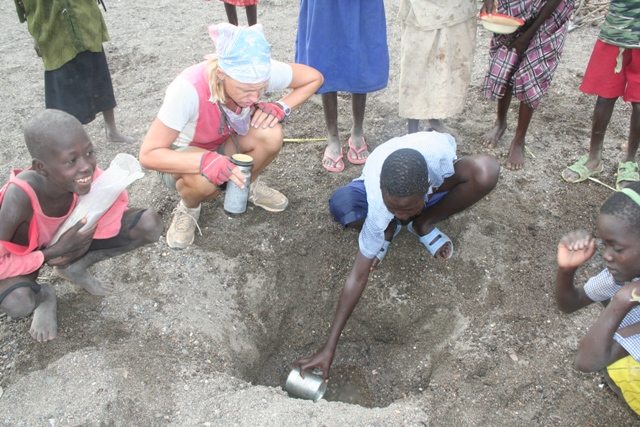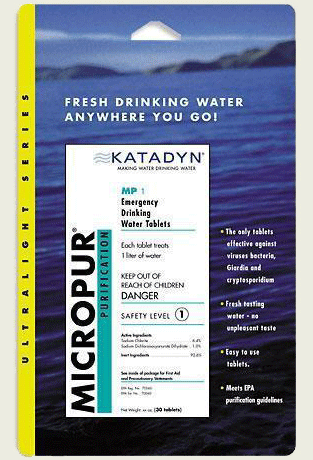staying healthy on your bike tour
 Unless
you want to find yourself squatting in a ditch doubled over with a bad
case of the runs, it's important that you find sources of safe drinking
water during your cycling tour.
Unless
you want to find yourself squatting in a ditch doubled over with a bad
case of the runs, it's important that you find sources of safe drinking
water during your cycling tour.Even in very remote parts of the world, you can almost always buy bottled water and coca-cola. Some enterprising shopkeeper just sits and waits for a group of aid-workers or rich Western tourists in a white Land Cruiser to pull up and buy these precious fluids.
Being on a budget and environmentally conscious, most cyclists will not want to depend on bottled water. They will want to drink the water locals drink, either directly or after first treating or filtering the water.
some serious illnesses
Think carefully before taking that first refreshing gulp. Drinking unsafe water is the most common cause of illness amongst travelers. Water-borne illnesses have a variety of causes. The most common of which is bacteria, such as E. coli, cholera and salmonella. Illness can also be caused by protozoa (including giardia and cryptosporidium), viruses (like hepatitis A, polio and rotavirus) and chemical pollutants.Sounds scary, doesn't it?
 What's
more, you can become ill simply because the pathogens in the water are
foreign to your immune systems. Locals have adapted to the
water
supply and can drink it without problems, but you'll get sick by
drinking the same water.
What's
more, you can become ill simply because the pathogens in the water are
foreign to your immune systems. Locals have adapted to the
water
supply and can drink it without problems, but you'll get sick by
drinking the same water.If you want to keep the time you spend moaning and groaning in the tent to a minimum, you'll have to be sure the water you drink is safe.
what's the solution?
We hardly ever bought bottled drinking water while cycling in developing countries. Normally we got our water from village wells or water taps that are meant to provide potable water for the local population. In manyh parts of the third world, this water is not safe to drink. When we have our doubts we filter the water or purify the water using Micro-Pur tablets or Micro-pur drops. A small bottle of drops can be used to purify 1000 liters of water.
There's no chlorine odor or taste and the required wait time is only 15
minutes for bacteria and viruses, and a 30 minute to 4-hour wait time
for cysts like Giardia and Cryptosporidia (depends on water quality).
We now use a First Need
XL portable water purifier from General Ecology, Inc.
The filter weighs 16 oz., with an average flow rate of about two quarts
per minute. What I like best about the water filter is that
it
removes all foul tastes and odors. The filter provides
instantly
purified water and removes bacteria, viruses and larger water borne
pathogens. Here in Central America, we have
been using the First Need
XL filter on almost a daily basis.
One last tip: if you're cycling in Africa, be
sure to fill up on water whenever you have the chance. It's
no
fun being caught out when
there's a water cut (very frequent) or the
pump in the next village is locked or broken.
If you enjoyed this post, you'll like these posts, too:
Staying HealthyGetting
Started
Tips for Choosing
Travel Insurance>>
We recommend
World Nomads
Inspiration
Hop on your Bike:
11 Things you'll Love about Bike Touring
If you enjoyed this post, please share it with others via Twitter.
How
do you deal with drinking water while bike touring? Any tips
for other cyclists biking in developing countries?
Please share in the comments section below.

| Get World Biking Newsletter |
| Email: |
| |
check out more photos from our trip
contact us at: worldbiking@gmail.com




